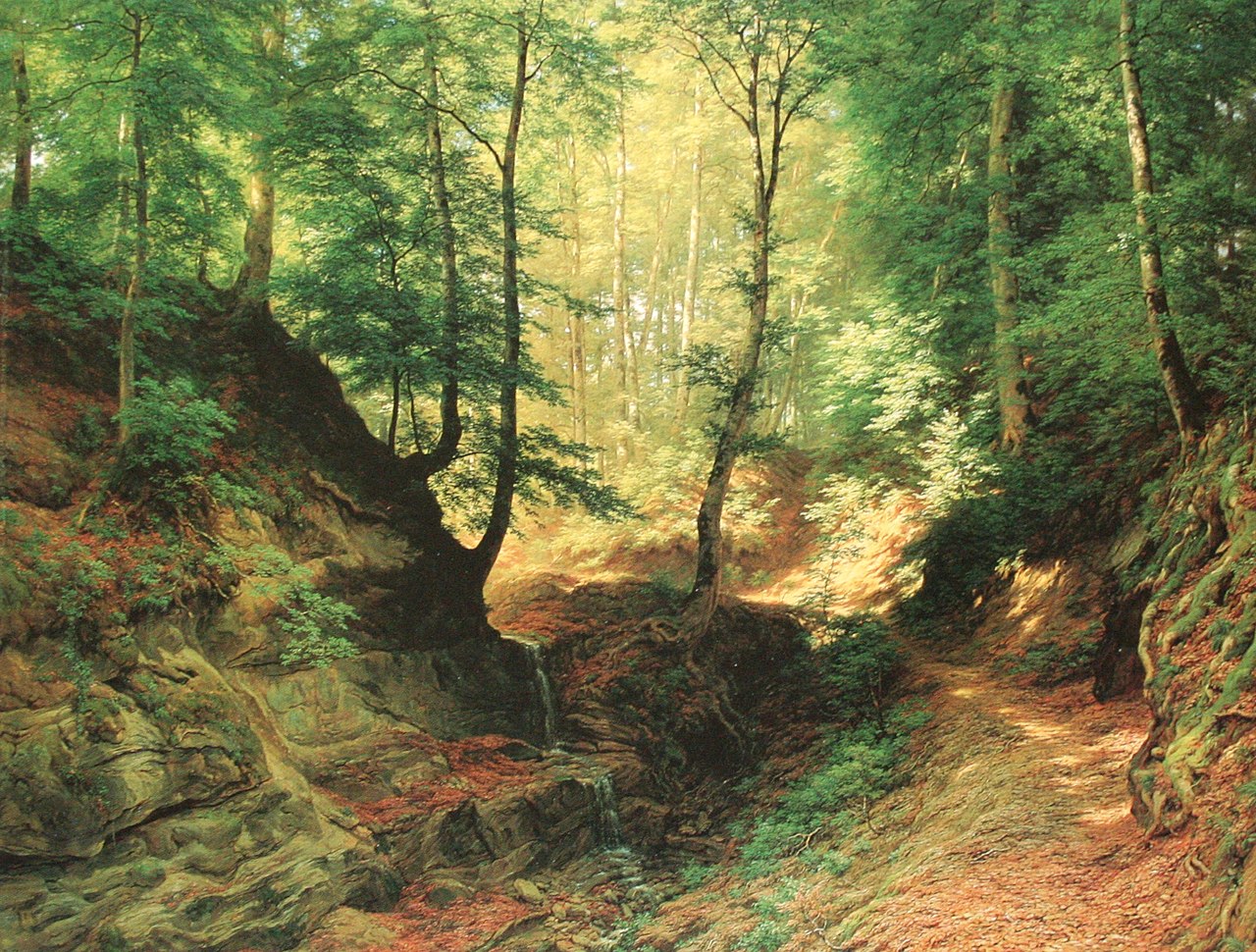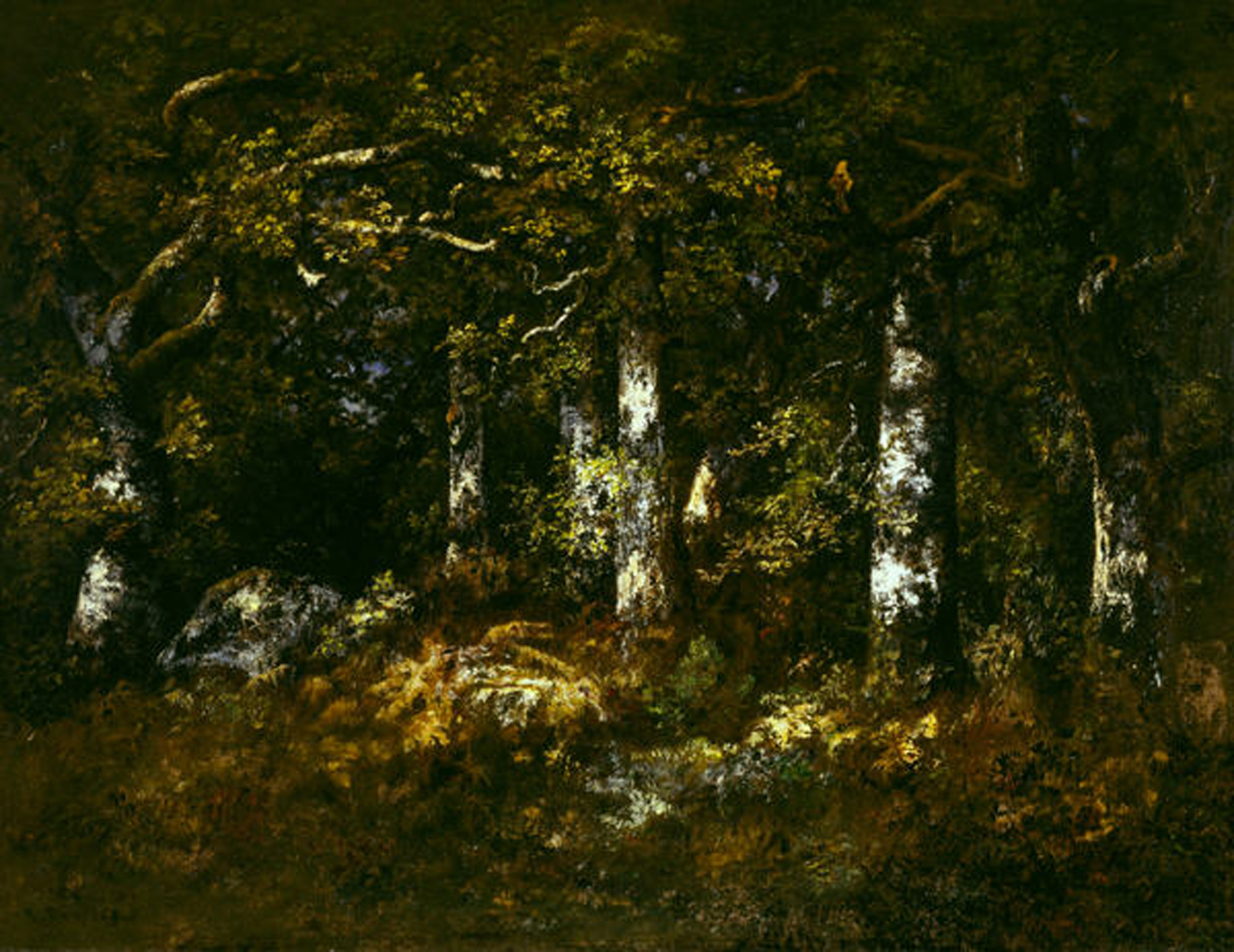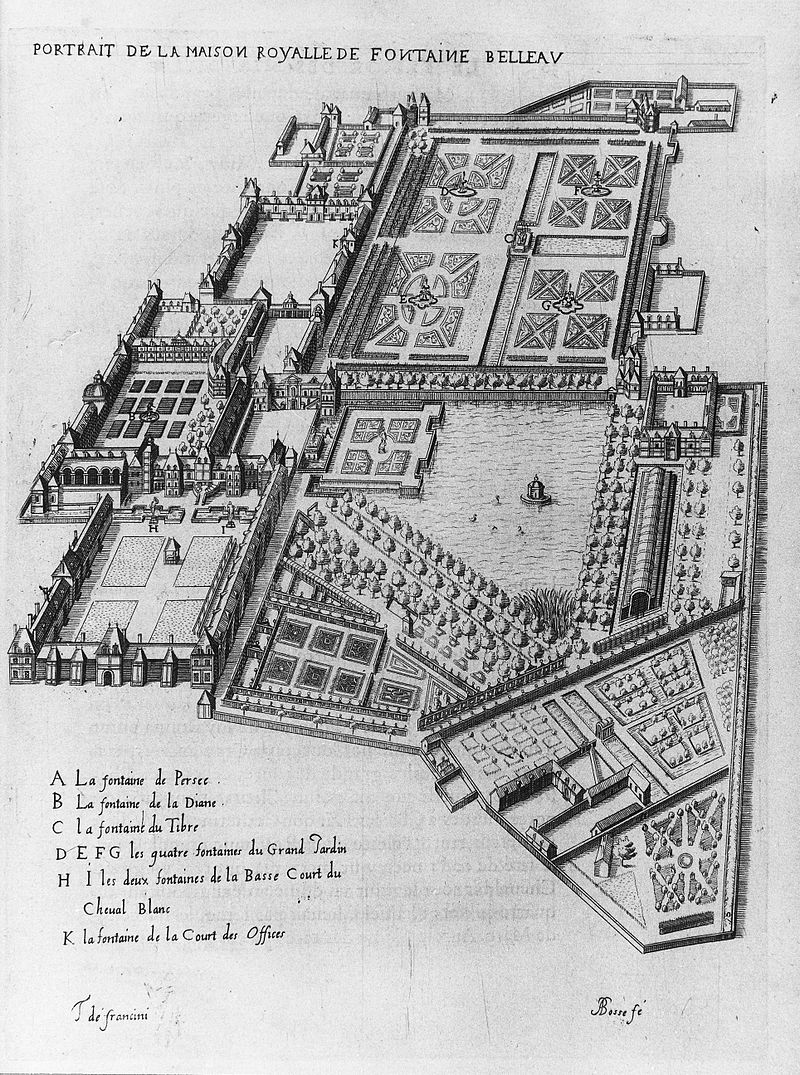We just got back from Prague, where there is a lot of interesting landscape-related art I could talk about. When I last went there photography in museums was prohibited; now I find my phone full of images and snaps of the accompanying wall texts. I thought here I would highlight three nineteenth century Czech artists in the National Museum, none of whom I've mentioned before: Antonín Mánes, Julius Marák and Otakar Lebeda. Here are the images, the curators' brief explanations and a few additional thoughts prompted by them.
Antonín Mánes, Landscape with Temple Ruins, 1827-8
Text: Mánes is considered to be the founder of Czech landscape
painting. During 1836-1843, he was the professor of the landscape school
at the Academy of Fine Arts in Prague and prepared his three children,
Josef, Quido, and Amalie, for careers in painting. Landscape with Kelso
Abbey Ruins was inspired by the popular poem Elegy Written in a Country
Church-Yard by Thomas Gray, translated into Czech by Josef Jungmann with
the title Elegie na hrobkach veskych in 1807. The view of the landscape
with the abbey ruins is a symbolical reminder of ephemerality and death
- memento mori; therefore, the painter placed his signature 'Antonius
Manes Bohemus' on the tombstone.
I was intrigued by the idea of a Czech landscape painting in the classical style (which we associate with Italian scenery) based on a ruin in Scotland but also (according to the above), derived from a poem written about a Buckinghamshire churchyard. Of course Gray's Elegy (1751) was so influential that the general idea of writing about the passing of time in a landscape with ruins quickly caught on and spread to other sites - John Langhorne's Written among the ruins of Pontefract Castle in 1756, to name just one example. The Elegy was also quickly translated into many languages - in a 2013 study Thomas N. Turk found at least 266 versions in forty languages (he mentions the Jungmann Czech translation but has it down as 1886 - maybe he's referring to a later edition).
There are several notable families of painters in the history of Czech art. Mánes's daughter Amálie Mánesová actually specialised in landscape (see for example Landscape with a Figure, 1843) although appranently this was because her father thought portrait painting inappropriate for women.
Julius Marák, Sumava Virgin Forest in a Storm, 1891-2
Text: In 1887, Julius Marák, who was in Vienna at that time, was called to the
Academy of Fine Arts in Prague to be in charge of the landscape
painting studio. In 1891, he received a commission from the Ministry of
Culture and Education to paint two large canvases of old-growth forests.
Marak created the preparatory sketches in Boubin Virgin Forest, which
was designated as a protected area as early as 1858. He first completed
Sumava Virgin Forest in the Storm while he worked on the counterpart
canvas Sumava Virgin Forest in the Sun (today in possession of Ceská
sporitelna bank) until 1897. The delay was caused by Marak's health
problems and his full-time position at the Academy, where he educated
many young landscape artists such as Antonin Slavicek, Frantisek Kaván,
and Otakar Lebeda.
This is a large canvas showing trees engulfed in darkness and swirling strands of mist with what light there is illuminating broken stumps and moss but barely penetrating the depths of the forest. It feels like a primal scene with no hint of human activity. It woud be interesting to see the companion piece owned by the Česká spořitelna (Czech Savings Bank) - I can't see this online. What's particularly interesting here is the idea of art being commissioned as part of the effort to preserve old-growth forests. This sounds quite progressive. Sumava is now a National Park, on the southern border with Bavaria. It stretches northwest of Horní Planá, the town where Adalbert Stifter was born, and it was in this region that he set many of his stories. The park website explains that when the prtected area began in 1858 it extended to 143.7 hectares, but 'the wind and subsequent bark beetle calamities, especially in the areas affected by wood extraction on Pažení mountain and in vicinity of Boubín peak' reduced this to less than fifty.
Julius Marák also had a daughter who became a painter. One of the highlights of the fourth floor of the huge Trade Fair Palace in Prague is an 1896
self-portrait by
Josefina Mařáková with her father. Sadly her health wasn't good and she died in 1907.
Otakar Lebeda, Mountain Lake in the Krkonoše Mountains,
1896
Text: Otakar Lebeda painted this canvas during his last holiday stay in September 1896. Lebeda painted the two glacial lakes, Small and Big, today in Poland, several times, always choosing an unusual view from above to the depth.
The realistic depictions of steep stone hillsides sloping down to the water may also be interpreted as a view into a soul, or as a symbol of death. In June 1897, Lebeda graduated from the landscape painting studio of Julius Marák at the Academy of Fine Arts in Prague where he was one of the most talented students. Four years later, he prematurely ended his life and promising career by shooting himself with a revolver as a result of depression and physical exhaustion.
Otakar Lebeda was only twenty-three when he died and during his final months he was
working on a large painting Killed by
Lightening, 'inspired by a true event that took place in the Chodsko region' (NGP). What to make of the idea that a landscape like this mountain lake reflects a depressed mental state? Is there anything documented that supports this or is it over-interpretation? It certainly is a gloomy scene.
I wrote here in 2016 about the affect of mental health on the landscapes of Lars Hertervig, where the painting style does seem clearly disturbed. (Last year's Nobel Prize winner for literature Jon Fosse has written two novels about Hertevig, Melancholy I and II, but I haven't felt like wanting to read them). There are other examples where we are tempted to look for signs of depression in landscape painting, most obviously Vincent Van Gogh, whose last painting was Wheat Field with Crows (1890)... Except it actually wasn't, as the Van Gogh Museum explains. 'It is often claimed that this was his very last work. The menacing sky,
the crows and the dead-end path are said to refer to the end of his life
approaching. But that is just a persistent myth. In fact, he made
several other works after this one.'

















.jpg/800px-Caspar_David_Friedrich_-_Kreuz_an_der_Ostsee_(Schloss_Carlottenburg%2C_Neuer_Pavillon).jpg)
















